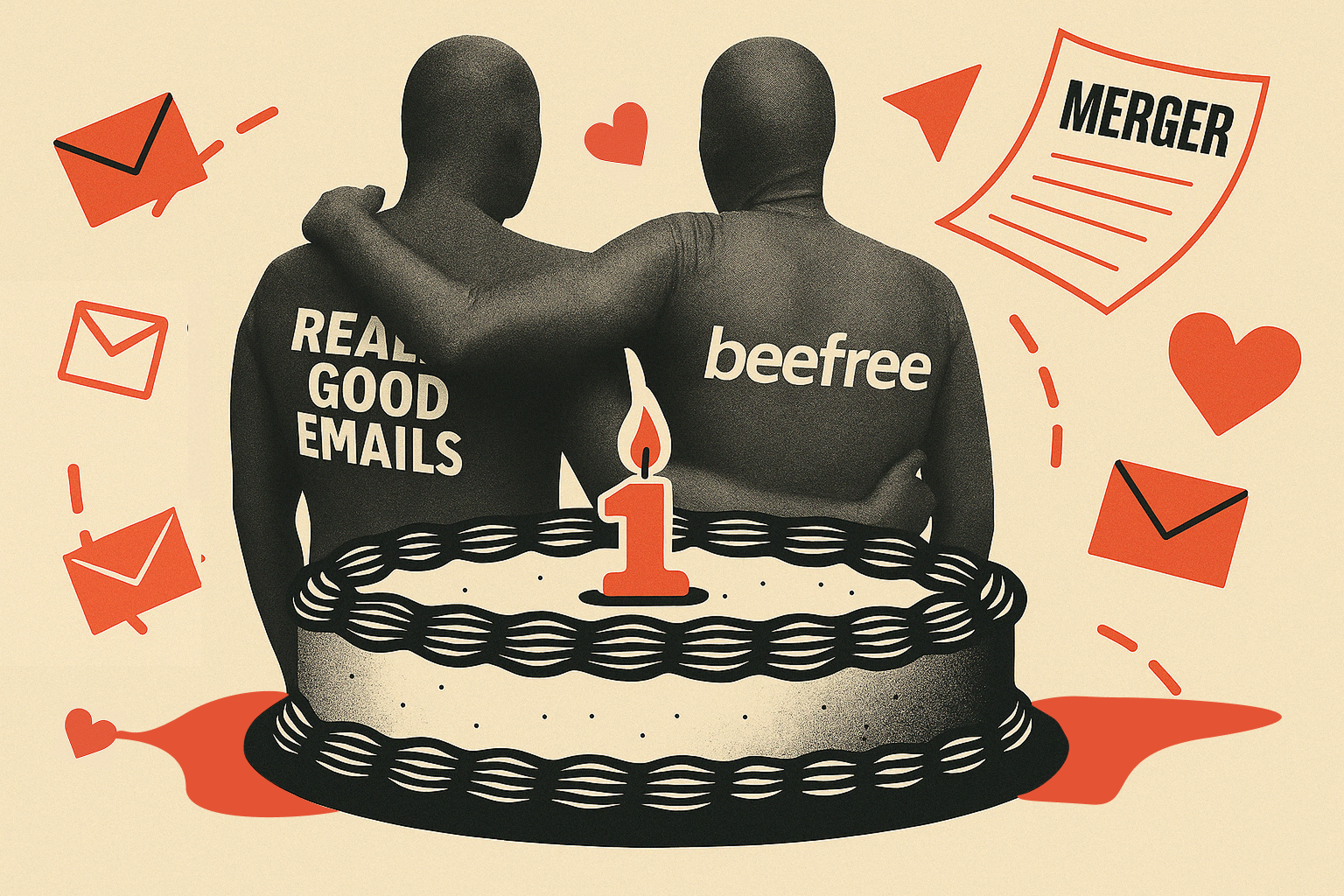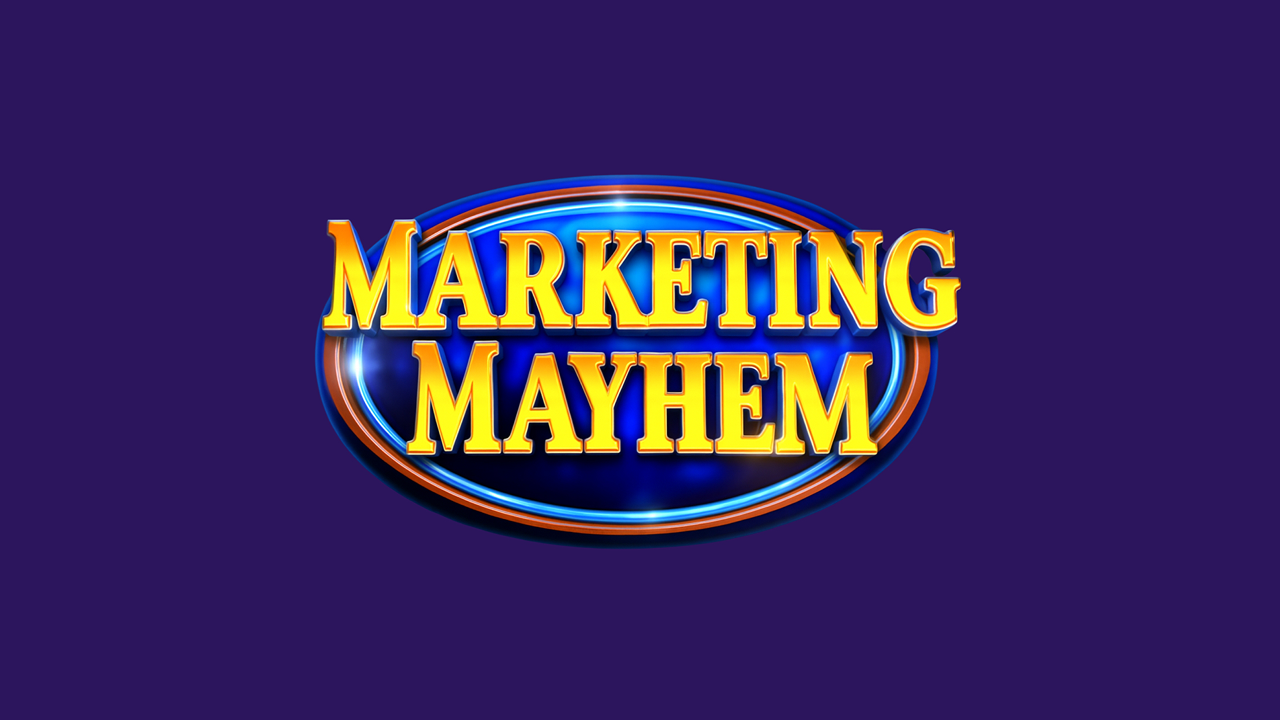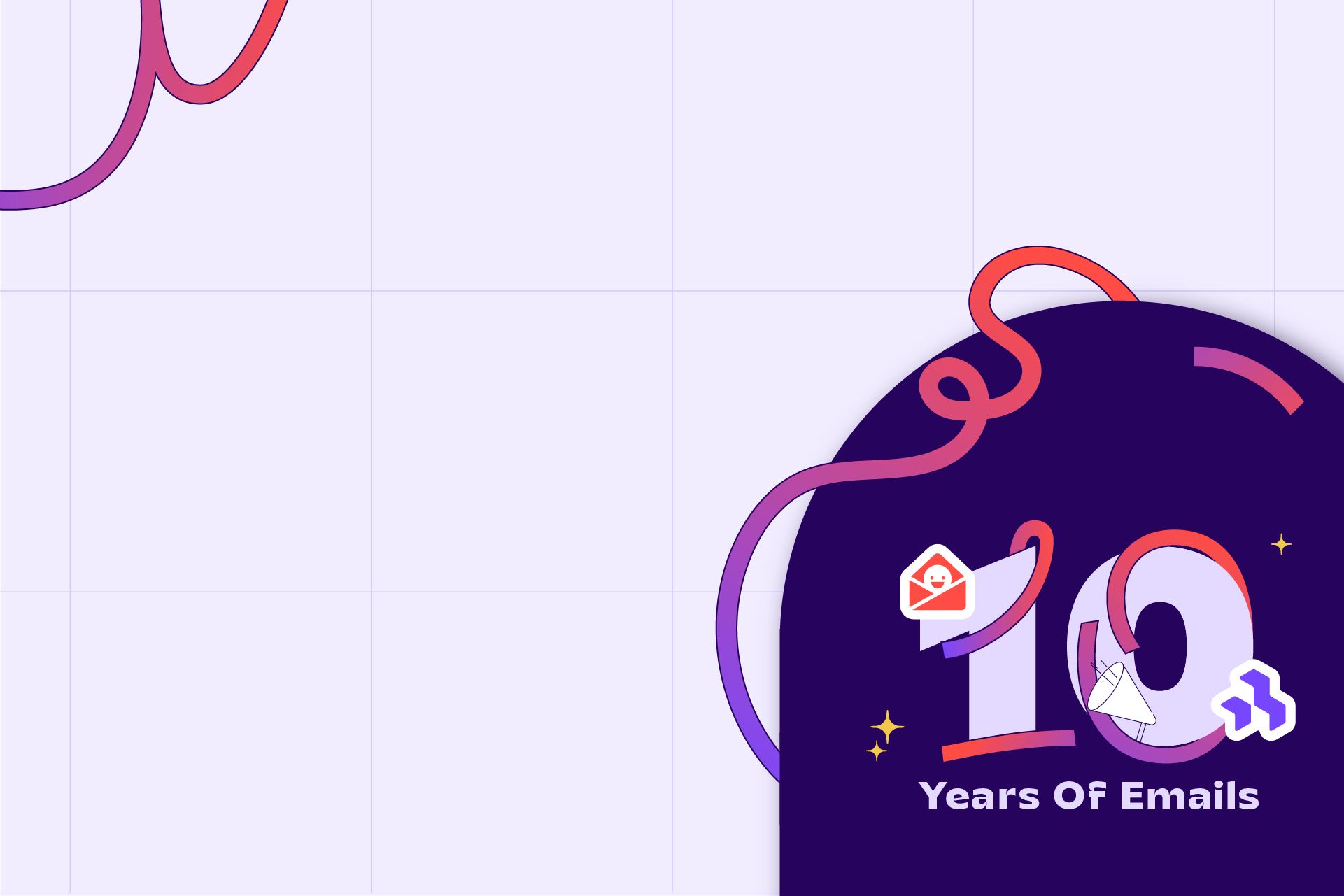Round 1 — The buzzwords that make marketers’ eyes twitch
The first question set the tone for the chaos: “What buzzword makes your eye twitch every time it hits your inbox?”
From growth hacking to generative AI, both teams wasted no time calling out the words that make marketers collectively cringe. Team RGE guessed “omnichannel,” which made the board, while “synergy” and “data-driven” earned a few knowing laughs but didn’t make the cut. When Team Customer.io got their turn, they threw in “streamlined” — sparking a debate about whether “streamlined” and “seamless” are basically the same thing (they are).
Top answers revealed:
- Growth hacking (#1)
- Generative AI
- Customer-centric
- Authentic engagement
- Omnichannel / Seamless
What it means:
The round made one thing clear: marketers are tired of buzzwords that sound smart but don’t convey much meaning. “Growth hacking” and “authentic engagement” might look good in a subject line, but they’ve lost meaning through overuse. As several players joked, if your message is truly customer-centric, your audience shouldn’t need to be told — they should feel it in the experience.
🧠 Pro tip: Drop the jargon. Instead of saying “seamless omnichannel experience,” try “We’ll text you when your order ships.”
Round 2 — The real MVP of a welcome email
The next question hit closer to home for every email marketer: “What’s the real MVP of a welcome email?”
Team Customer.io buzzed in first with “personalization,” followed closely by Team RGE, who went for “subject line.” Both made the board — and from there, the debate took off.
Throughout the round, teams threw out everything from CTA and send timing to offers and good copy. Some guesses, like “good copy” or “the sender,” surprisingly didn’t make the list — sparking collective disbelief (and some very relatable marketer frustration).
When the dust settled, the top answers revealed were:
- Clear next steps / clear value (Logan’s winning steal)
- Subject line
- CTA
- Send timing
- Mobile optimization/design layout
Team RGE took the round after naming “clear next steps,” clinching it with what might be the most marketer-approved answer of all.
What it means:
The welcome email isn’t just a formality — it sets the tone for your entire relationship.
What matters most isn’t clever copy or even a great offer; it’s clarity. Readers need to know what to do next, when to do it, and why it matters — all in one scroll.
🧠 Pro tip:
A perfect welcome email says: “We’re glad you’re here — here’s exactly what to do next.” Keep it simple, mobile-friendly, and timely.
Round 3 — The KPIs marketers are too obsessed with
By round three, things started getting real. “Name a KPI marketers are way too obsessed with.”
Team Customer.io buzzed in first with MQLs, but surprisingly, it didn’t make the board. Team RGE followed up with the obvious choice: open rate — and they were right on target.
From there, the guesses came fast: click-through rate, list size, unsubscribes, impressions, and social reach. Each sparked laughs and groans in equal measure, as both teams realized just how many metrics marketers track without really learning from them.
When the board was revealed, the top answers were:
- Email list size (#1)
- Click-through rate (CTR)
- Unsubscribes
- Impressions
- Bounce rate
The conversation that followed hit a nerve. Naomi and Logan agreed that list size is the ultimate vanity metric: it looks impressive, but means nothing without engagement. They also pointed out that metrics like CTR and bounce rate are still valuable when used in context, while impressions feel too vague to drive real improvement.
What it means:
Marketers love numbers — but not all numbers tell the truth. This round reminded everyone that the metrics we obsess over often say more about ego than performance. A large list or a high open rate doesn’t guarantee success if your audience isn’t reading, clicking, or engaging.
🧠 Pro tip:
Track quality over quantity. Measure what drives real connection — retention, conversions, and engagement — not just what fills a dashboard.
Round 4 — What marketers pretend to understand
By round four, things took a philosophical turn. “What’s one thing most marketers are faking their understanding of?”
Team RGE buzzed in first with the answer everyone expected: AI — and it took the #1 spot immediately. From there, the board filled with equally tricky concepts: attribution modeling, analytics tools, data privacy, GDPR, and lifecycle marketing. Logan called out AI as “something we all nod along to, then Google later.” Mike added that many marketers still don’t truly understand multi-touch attribution, while Kelsey pointed to deliverability as a recurring mystery. Later in the round, Jenna from Team Customer.io nailed a big one — customer lifecycle journey mapping — after a few hints from the host.
Top answers revealed:
- AI (#1)
- Attribution / Multi-touch modeling
- Data privacy & GDPR
- Analytics tools (GA4, Amplitude, etc.)
- Customer lifecycle mapping
- Omnichannel marketing
- Customer lifetime value
- Marketing mix modeling
The discussion that followed was one of the best in the show. Cody admitted that many marketers fall back on “Let the AI do it” — even when they’re not sure what that means. Logan explained that AI isn’t truly “intelligent” — it’s predictive, and humans are predictable — while Mike warned that giving AI too much control can lead to dark patterns and clickbait tactics. Kelsey highlighted how she uses AI to spot patterns and friction points, but still relies on human empathy to shape the message. And Jenna reminded everyone that with data protection laws tightening, human-written copy and authentic tone will always outperform machine output.
What it means:
AI might be changing the game, but this round proved that human judgment still wins. Technology can surface data, patterns, and insights — but empathy, ethics, and creative intuition can’t be automated.
🧠 Pro tip:
Let AI handle the how. Keep humans in charge of the why.
Critical take arena (CTA): AI, Emotion, and the Human Touch
This was the round where things took a philosophical turn. Logan (RGE) and Naomi (Customer.io) joined forces for a lightning-fast discussion about the future of marketing — and where humans still matter most.
What we learned:
- People cancel subscriptions when emails feel repetitive, irrelevant, or expensive.
- Marketers use AI most often for brainstorming, copywriting, and send-time optimization.
- However, no matter how advanced the tools become, AI still can’t replicate empathy, tone, or instinct.
🧠 Pro tip:
Use AI for the how, but keep control of the why. And while automation tools like Beefree can streamline workflows, the creative direction — the empathy and intent behind every message — still remains yours.
Round 5 — Your campaign just flopped. What’s your first panic move?
After the deep talk about AI, it was time for a reality check. “Your campaign just flopped. What’s your first panic move?”
Team Customer.io jumped in with “A/B test!” — a solid answer that made the board. Team RGE countered with “Cry” — which, somehow, was also on the list (and arguably the most relatable). As guesses rolled in, things got funnier and more real: Check the links, optimize the offer, resend it, and even reevaluate the data. When Logan finally guessed “Check deliverability,” Team RGE stole the round — and took home a mountain of points.
Top answers revealed:
- Check deliverability (#1)
- Segment differently
- Pretend it was a test
- Change the subject line and resend
- Blame the data
- Cry (relatable)
In the post-round discussion, both teams agreed that a failed send isn’t the end — it’s a moment to troubleshoot, learn, and adapt. Naomi joked about the panic that sets in before realizing it’s often just a deliverability issue. Mike added that pretending a bad send was “just a test” might be the oldest trick in the book.
What it means:
Every marketer has been there — a campaign bombs, and panic hits. But the best teams don’t spiral; they investigate. Checking deliverability, list quality, and audience segmentation can reveal the real reason performance tanked — long before you need to cry.
🧠 Pro tip:
Before you blame your creative, check if your audience has ever seen it.
Deliverability comes first, recovery second.
Final Hill — What email marketers still believe in
After five rounds of mayhem, one last question brought everyone together: “What’s a hill lifecycle marketers will absolutely die on?”
By this point, there was no buzzer chaos — just nods, laughs, and strong opinions. Naomi went first, choosing the classic belief: “Personalization matters.” From there, the board revealed what most marketers still hold dear, even in the age of automation and AI.
Top beliefs revealed:
- Email isn’t dead (#1)
- Quality > Quantity
- Timing > Perfect copy
- Automation isn’t “set it and forget it”
- Every touchpoint should add value
- First-party data is king
- Batch and blast is dead
- Context over content
- Frequency caps are non-negotiable
- Personalization matters
As the host scrolled through the final board, everyone agreed: despite the new tools, trends, and AI hype, email marketing remains a human craft. Timing, tone, and trust — not just templates or automations — are what build real connection.
What it means:
Marketers may argue about KPIs or buzzwords, but they’re united by one truth: email still works because people do. Every click, open, or reply is built on empathy, relevance, and respect for the audience.
🧠 Pro tip:
Build your lifecycle journeys like relationships:
- Be consistent.
- Be considerate.
- Never ghost your subscribers.
The final score
🏆 Team RGE: 533 points
💪 Team Customer.io: 247 points
There were no losers — just marketers with slightly different buzzword trauma (and a few new inside jokes to take back to their teams).
Final thoughts
In the end, Marketing Mayhem wasn’t just a game show — it was a snapshot of how marketers really think, react, and learn. Between the laughter and lighthearted chaos, it revealed something deeper: marketers crave clarity, creativity, and connection more than ever. As Shakuri signed off, the message was clear: The inbox may be chaotic, but that’s where the magic happens. Until next time: Keep testing. Keep learning. And please… check your deliverability before you cry.
TL;DR — What we learned from the Mayhem
- Email isn’t dead. The tools evolve, but human connection remains the driving force behind performance.
- Clarity beats complexity. Whether it’s a buzzword-free subject line or a clear CTA, simplicity wins.
- Vanity metrics fool us. Big lists and open rates mean nothing without engagement.
- AI is powerful — but not emotional. Let it speed up your process, not replace your judgment.
- When campaigns flop, don’t panic. Check deliverability, learn fast, and move on.


